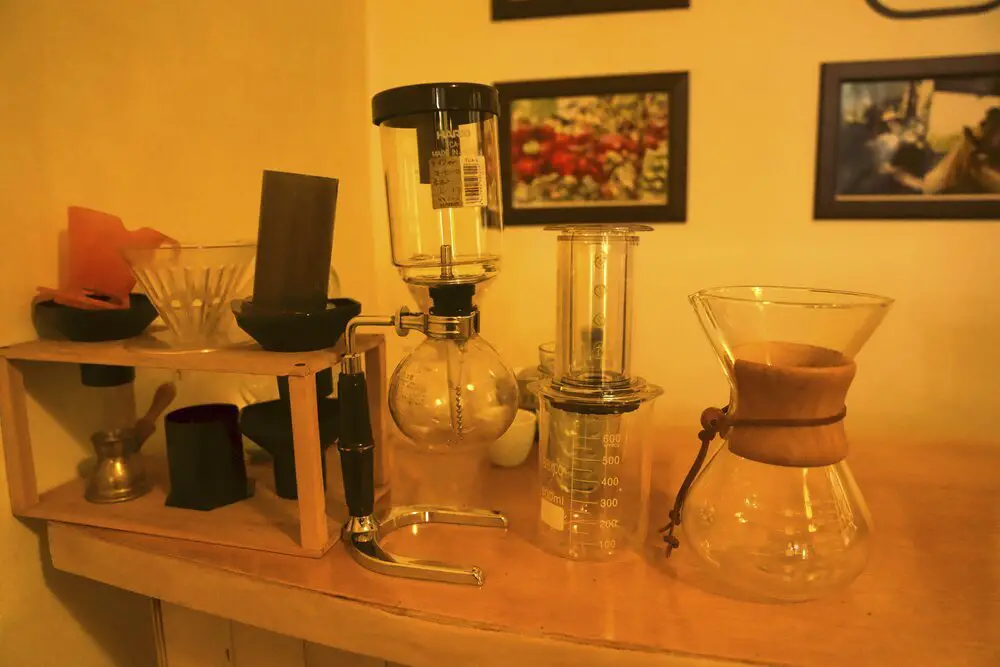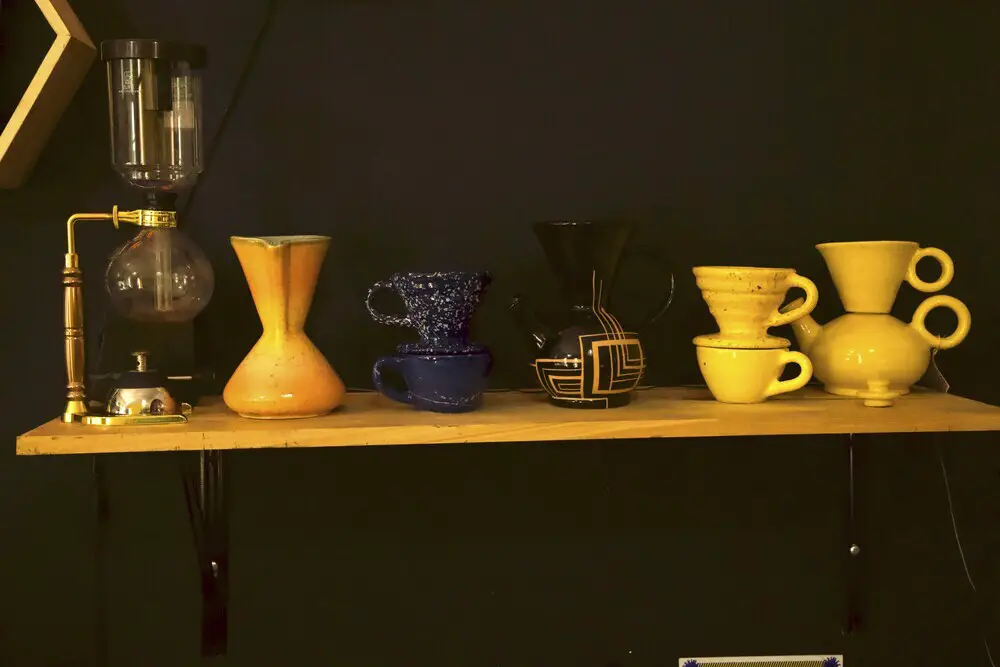Today there are thousands of coffee makers of all styles, brands and price ranges.
Here, however, we are going to talk about clay coffee pots, which have accompanied us for centuries and are still around today, very popular especially in rural areas and in certain markets.
Table of Contents
What is a clay coffee maker?
It is a vessel made of clay or clay in which coffee can be brewed. They can also be called clay teapots because initially there was no distinction between coffee makers and teapots, allowing one and the same product to perfectly fulfill both functions.
This is the case when it comes to infuser coffee, but it’s a little different with drip coffee.
Clay coffee machines have been around for many years. In the beginning, these were made by hand piece by piece. However, thanks to industrialization, mass production dominates the market.
How is a clay coffee maker made?
First of all, keep in mind that a handmade coffee maker takes a lot of time to make and the pieces are considered works of art.
- Slip, a mixture of water and clay, also known as liquid clay, serves as the starting material. It can be more fluid if you use a plaster mold or thicker if you shape it by hand.
- In manual manufacture, the slip is first placed on a rotating surface, making it easier to shape.
- You can then shape the desired shape of the coffee pot inside and out.
- Depending on the model of the coffee pot, you can work in one piece or in two pieces (the container and the space for the filter), adding the lid if necessary. With the two pieces, it’s best to make them separately and then put them together immediately.
- Once all the pieces are formed, the product needs to be left to dry for 12 to 22 days. This time can vary depending on the initial humidity, the climate of the area and the place where the coffee maker is kept.
- Then you can put the coffee maker in the oven to complete the drying process. The temperature should be above 800 degrees Celsius.
- As soon as the coffee machine comes out of the oven, it has to rest. Then it can be painted and decorated.
- You can then enamel or varnish the piece, which will add shine to the end result and make the coffee maker more resistant. This step can be done either by painting the piece with the varnish or by dipping the whole piece directly into the liquid.
- Finally, the coffee pot goes into the oven a second time, this time at a temperature of around 1,100 degrees Celsius, to dry the glaze and make the product ready for marketing and further use.
Types of clay coffee machines
There are two types of clay coffee makers: infusion pots and drip pots.
Also remember that whatever type of clay coffee maker you choose, these are only intended for making espresso, being very simple and in some cases rudimentary products.
Clay infusion coffee maker
Infusion pots are placed directly on the fire to mix the ground coffee with boiling water and then filter and serve the drink.
These coffee pots are the most common and were formerly used as teapots as well.
Clay or rustic stoneware coffee pots
This coffee machine has tradition all over the world and is usually:
- Round, with a lid and a handle.
- Robust, with a tone of considerable thickness.
- Resistant to scratches and temperatures.
- It has a spout for the liquid.
Clay drip coffee maker
Today it is common to find clay coffee pots that, while not electric, have a system that mimics the dripping action. Drip coffee pots include a place for the filter and do not need to be placed over a fire.
They function more like a filter canister. The hot water mixes with the coffee and falls through the filter thanks to gravity.
The popularity of these coffee machines has increased so much that today we would like to present to you two examples of this type of product developed in Latin America.
Typical clay coffee pot
This artwork is typical of the coffee region of Colombia in the department of Antioquia and parts of Caldas and Quindio. According to its creators, the name comes from the “Typica” coffee variety, famous in the region.
This coffee pot consists of:
- A single piece with an hourglass shape and a handle.
- In the upper part there is a kind of cone in which the filter is inserted.
- A decoration with paintings and patterns chosen by the customer or by the artisan, handcrafted.
Clay La Vándola coffee pot
This is a coffee maker developed in Costa Rica. It is based on the region’s traditional “drip coffee” technique, i.e. what is known worldwide as “dripping”.
The appearance of this coffee maker is:
- Elongated shape, resembling a pitcher.
- A slim neck with room for a conical filter.
- A handle and a spout.
- An opening, called the valve, which is located under the filter and helps the flow of oxygen during the brewing process.
How does a clay drip coffee maker work?
- Put the filter in the right place.
- Fill the filter with the desired amount of coffee.
- Pour the water through the filter at a temperature of about 90 degrees Celsius.
- We wait until all the liquid flows into the brewer.
- we can serve
Where can you buy a clay coffee maker?
Unfortunately, it is becoming increasingly difficult to find stores that sell this type of coffee maker.
It is almost impossible to buy such a coffee maker in chain stores. If you are personally looking for such a coffee maker, you should look around stores that sell handicrafts or ceramics in general.
Why buy a clay coffee maker?
There are several reasons to buy a clay coffee pot. However, it is not a perfect product.
| Advantages of a clay coffee maker | Disadvantages of a clay coffee maker |
| The enamel provides protection against scratches and a finish that will not wear down over time. | She is very sensitive to blunt impacts. It can break or splinter. |
| It is considered a work of art when it is handmade. | The price is not competitive compared to other alternatives. |
| It is a highly acclaimed material because it does not alter the taste and is easy to clean. | The lack of traits or varieties limits the coffee’s popularity somewhat. |
Conclusion
Clay coffee pots are not only functional and incredibly durable, but depending on how they are made, they can also be considered works of art.
Even if they are not highly technological, they have an aesthetic, traditional and cultural added value that makes them highly recommended.



